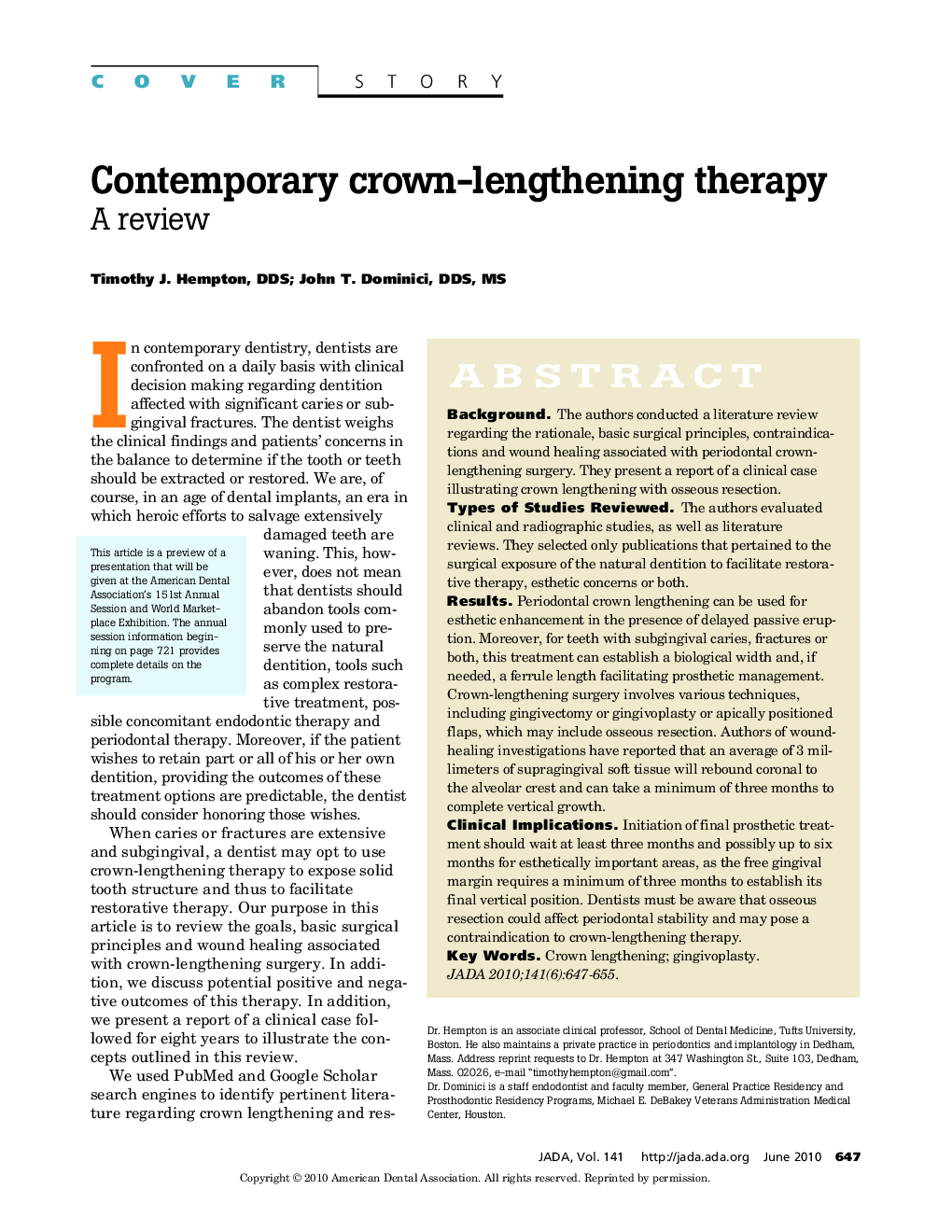| Article ID | Journal | Published Year | Pages | File Type |
|---|---|---|---|---|
| 3138546 | The Journal of the American Dental Association | 2010 | 9 Pages |
ABSTRACTBackgroundThe authors conducted a literature review regarding the rationale, basic surgical principles, contraindications and wound healing associated with periodontal crown-lengthening surgery. They present a report of a clinical case illustrating crown lengthening with osseous resection.Types of Studies ReviewedThe authors evaluated clinical and radiographic studies, as well as literature reviews. They selected only publications that pertained to the surgical exposure of the natural dentition to facilitate restorative therapy, esthetic concerns or both.ResultsPeriodontal crown lengthening can be used for esthetic enhancement in the presence of delayed passive eruption. Moreover, for teeth with subgingival caries, fractures or both, this treatment can establish a biological width and, if needed, a ferrule length facilitating prosthetic management. Crown-lengthening surgery involves various techniques, including gingivectomy or gingivoplasty or apically positioned flaps, which may include osseous resection. Authors of wound-healing investigations have reported that an average of 3 millimeters of supragingival soft tissue will rebound coronal to the alveolar crest and can take a minimum of three months to complete vertical growth.Clinical ImplicationsInitiation of final prosthetic treatment should wait at least three months and possibly up to six months for esthetically important areas, as the free gingival margin requires a minimum of three months to establish its final vertical position. Dentists must be aware that osseous resection could affect periodontal stability and may pose a contraindication to crown-lengthening therapy.
